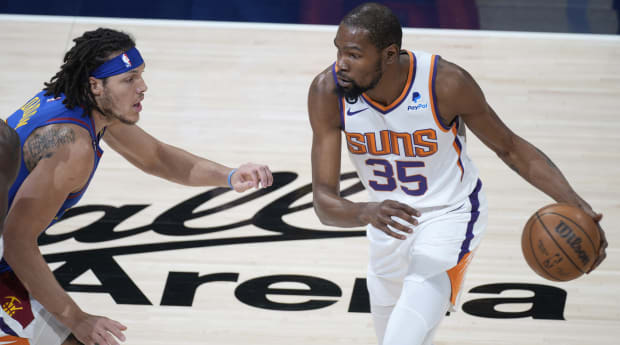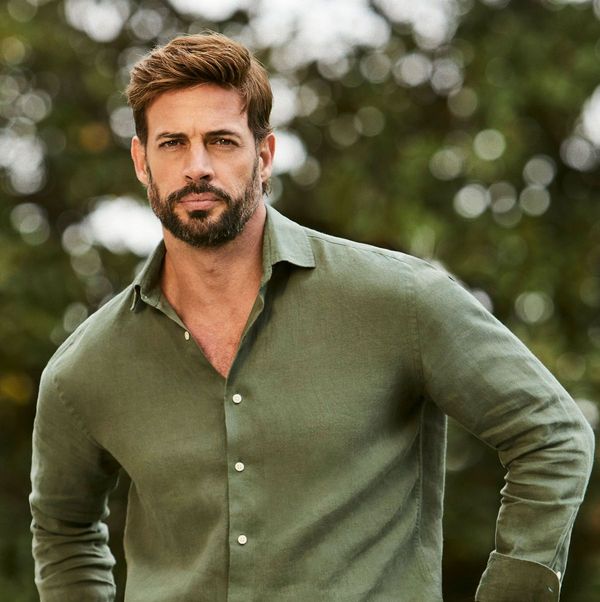Good morning, I’m Dan Gartland. Twelve hours later I’m still thinking about the terrible loss the Yankees had last night.
In today’s SI:AM:
🏒 The nifty trick shot taking the NHL by storm
⚾ The dangers of MLB’s need for speed
If you're reading this on SI.com, you can sign up to get this free newsletter in your inbox each weekday at SI.com/newsletters.
How real are the Pirates?
MLB’s two unlikely league leaders are set to square off in a three-game series beginning tonight, with the Pirates (first in the NL at 20–9) traveling to Tampa Bay to take on the AL-leading Rays (23–6). While it’s not a shock to see the Rays, who have made the postseason in four straight years, at the top of the standings, it’s been a long time since the Pirates were relevant, and few expected them to make much noise this season.
But Pittsburgh has won 11 of its last 13 to surge into first place in the NL. It’s an unlikely outcome for a team that FanGraphs projected to go 74–88 before the season, with a 6.5% chance of making the playoffs. And it’s even more surprising when you consider that the Pirates’ current hot streak has come after the team lost one of its most important players—shortstop and leadoff hitter Oneil Cruz—to a broken ankle.
Cruz was one of the top prospects in baseball before his rookie year last season and finished sixth in Rookie of the Year voting. He’s a crucial part of the Pirates’ future, and, when he broke his ankle on a play at the plate April 9, it seemed like this would be another lost season. But not so fast. Even with Cruz sidelined, Pittsburgh is playing its best baseball in years. This is the first time since July 2018 that the Pirates have won 11 out of 13. (The ’18 season was also the last time Pittsburgh finished above .500.)
So how are they doing it? Well, for one thing, Cruz’s replacement at shortstop, Rodolfo Castro, has been hitting very well—better than Cruz, even. He’s slashing .286/.385/.468, good for an OPS+ of 133 (where 100 is average). As talented as Cruz is, his OPS+ last season was only 108. A couple of other players have had offensive breakouts as well, including Connor Joe (ninth in NL with a .962 OPS) and second-year center fielder Jack Suwinski, whose 1.011 OPS would be seventh in the NL if he had the necessary playing time to qualify for leaderboards. Add in the newly extended Bryan Reynolds and a returning Andrew McCutchen and you have a pretty decent lineup.
The Pirates currently rank fifth in the majors with 5.38 runs scored per game, and they’re doing it in an interesting way. Their 34 team home runs are tied for 12th in the majors, but they’re making up for their relative lack of power with elite speed. Pittsburgh leads the majors with 41 steals (six more than the second-place Guardians) and is tied for the league lead with eight triples. And, even though balls aren’t leaving the park, the Pirates are fifth in the majors in hard-hit rate.
As for the pitching, as Emma Baccellieri wrote last week, Pittsburgh’s staff relies heavily on breaking balls, throwing more curveballs, sliders and sweepers than any team since Statcast data became available in 2015. The result is a team ERA that is sixth in the majors. Another reason the Pirates’ pitchers are succeeding is that both of the team’s catchers—Austin Hedges and Jason Delay—are among the top 10 in pitch framing according to both Statcast and Baseball Prospectus.
The Pirates have played great baseball for a month, but can they keep it up? They’ve benefited from the preseason division favorite Cardinals’ slow start, but they still need to outlast the Brewers to win the Central. The two most popular projection systems—at Baseball Reference and FanGraphs—aren’t convinced that they’ll keep up their winning ways. Both project Pittsburgh to play sub-.500 ball the rest of the way and give the club about a 32% chance of making the playoffs.
It’s tough to draw conclusions from one three-game series over the course of a 162-game season, but a strong showing from the Pirates in Tampa Bay this week—against a team that leads the majors in both runs scored and team ERA—would inspire confidence that Pittsburgh’s miserable run of losing could be coming to an end.
The best of Sports Illustrated

AP
- Today’s Daily Cover story by Michael Baumann analyzes a highlight-providing, goal-scoring tactic employed by a growing number of NHLers.
- Albert Breer spoke with Cowboys assistant scouting director Chris Vaughn about what it was like to draft his son, Deuce, over the weekend.
- Tom Verducci examines the increase in 100-mph pitches and the costs associated with it.
- It’s LeBron vs. Steph (and Draymond and Klay) again. But this matchup has a fresh feel to it, Chris Mannix writes. Regardless, it’s one we should focus on enjoying, Michael Rosenberg adds.
- Even before putting up just 87 points in a Game 2 loss in Denver last night, it was clear the Suns’ offense needed to modernize, Rohan Nadkarni writes.
- With Joel Embiid sidelined, the Sixers got a vintage James Harden performance, whose 45 points and step-back, game-winning three with eight seconds left catalyzed a Game 1 upset over the Celtics, Nick Selbe writes.
- The Devils dominated the Rangers in Game 7 to set up a second-round series with the Hurricanes. With the early exits of last year’s Cup winners (Avs) and this year’s Presidents’ Trophy holders (Bruins), there’s a new betting favorite, according to SI Sportsbook.
- An NAIA baseball player was struck by a stray bullet during a game in Texas.
- Jelani Scott rounded up the best Met Gala looks from athletes.
The top five...
… things I saw last night:
5. The Nationals’ new, powdered-wig celebration.
4. This extremely awkward basket by Nikola Jokić to give him 35 points against the Suns. He finished with 39 points and 16 rebounds as the Nuggets took a 2–0 lead on the Suns.
3. Ronald Acuña Jr.’s home run to the third deck at Citi Field.
2. Kevin Harlan’s reference to Celtics announcer Johnny Most’s famous “Havlicek stole the ball!” call.
1. James Harden’s side-step three over Al Horford to win it for the Sixers.
SIQ
With an 0-for-3 day against Cleveland on this day in 1941, Ted Williams’s batting average dipped as low as it ever did during his record-setting .406 season. What was his average after that day?
- .296
- .308
- .321
- .344
Yesterday’s SIQ: On May 1, 1884, Fleet Walker became the first Black man to play in a major league baseball game, six decades before Jackie Robinson. Which American Association team did he play for?
- Toledo
- Louisville
- Columbus
- Indianapolis
Answer: Toledo. Walker (full name Moses Fleetwood Walker) played baseball at Oberlin College in Ohio and at the University of Michigan, where he enrolled in law school after graduation. He also played semi-pro ball while at Michigan and in 1883 joined the Toledo Blue Stockings. The following year, the team joined the American Association, a major league, and Walker became the first Black player in big league history.
Walker played 42 games as a catcher for Toledo before he was released due to injury. His younger brother Weldy (also spelled Welday in some sources) played five games for Toledo that season as well.
The Walker brothers were the first—and, for a long time, last—Black players in big league baseball. Subsequent actions by the sport’s most influential people ensured no one would join them until Jackie Robinson broke the color barrier 63 years later.
Like Robinson, Walker faced severe racial prejudice from opponents and even teammates. Baseball historian Adam Darowski told SI’s Sarah Vasile in February about an 1883 incident in which Hall of Famer Cap Anson refused to let his White Stockings play against Walker and the Blue Stockings because Walker was Black.
On Aug. 10, 1883, Anson’s Chicago White Stockings (now the Chicago Cubs) came to Toledo for an exhibition game. Walker, who was injured, wasn’t even scheduled to play, but his presence still caused a stir. The Chicago team, led by Anson, asserted that they wouldn’t play if a Black man was there, but Toledo Blue Stockings manager Charlie Morton called their bluff.
“Morton said, ‘Well, now that you’ve said that, he is going to play,’” Darowski recounts. “Even though he was injured, Walker was put in the lineup, and Anson threw a fit, but ultimately he relented, because he wouldn’t get his gate money if he canceled the game.”
The hatred wasn’t limited to opponents. Toledo pitcher Tony Mullane acknowledged in a newspaper interview that he disregarded Walker’s signals behind the plate due to his race.
While Walker’s accomplishments are oft overlooked and not nearly as well known as Robinson’s, there have been efforts to recognize his contributions to baseball and American society. In 2017, the Ohio state legislature passed a resolution designating Oct. 7 (Walker’s birthday) as Moses Fleetwood Walker Day in his home state.







